Karl Ruppert and
John Dennison first reported Hormiguero during their second expedition to Campeche, they were sent by the Carnegie Washington Institution
in April 1933. Nevertheless, it was until 1979 when the first carving and conservation actions to the site took place. Nowadays we know
that the period that had the widest occupation was registered under
the archaeological evidence somewhere between the years 600-800 C.E.
during the late Classic period.
Within the Rio Bec region, where zoo-morphic porches outstand, in
Hormiguero (Ant hill), we can see an edifice divided in three sections.
On its center there is a great zoo-morphic mask and on its sides rounded
corner towers rise with unfinished stairways, typical of the region.
As well as Hochob, this porch has several sections, being the most
conspicuous one, the one on the center, which serves as a doorway
in resemblance of a monstrous mouth opening its jaws. This point is
the border between the upper world and the underworld.


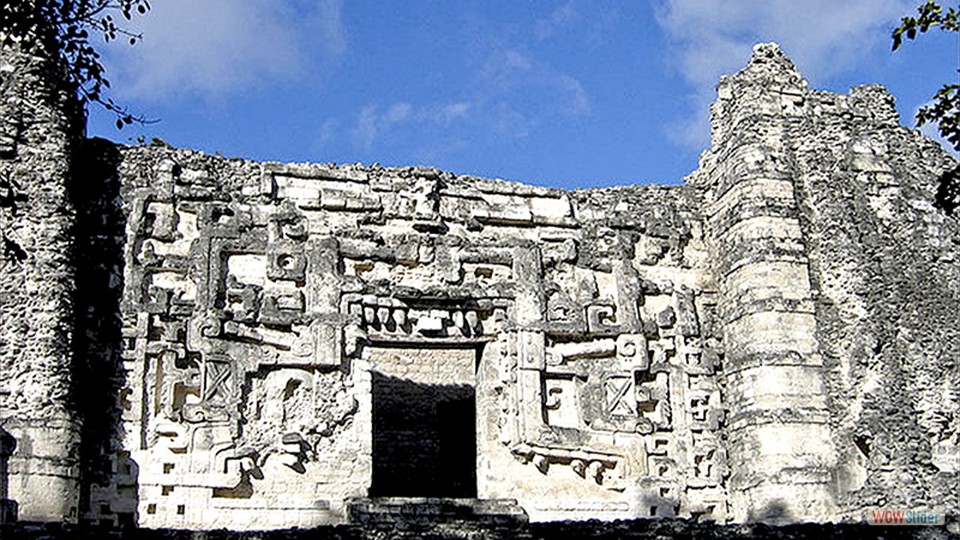
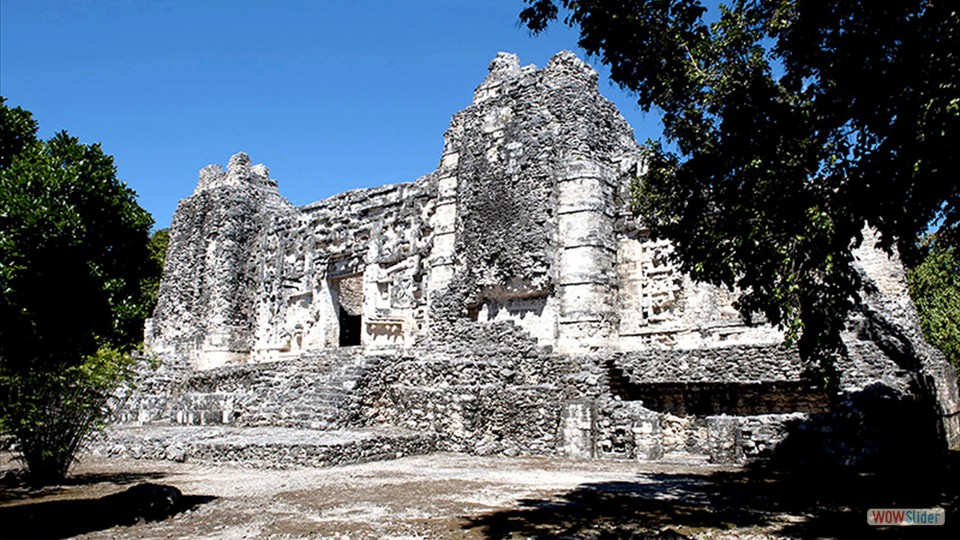
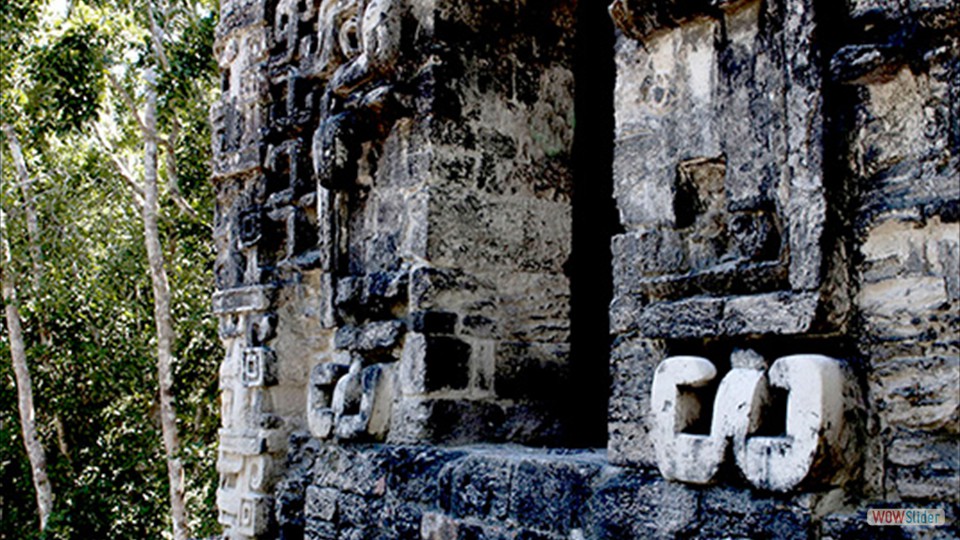
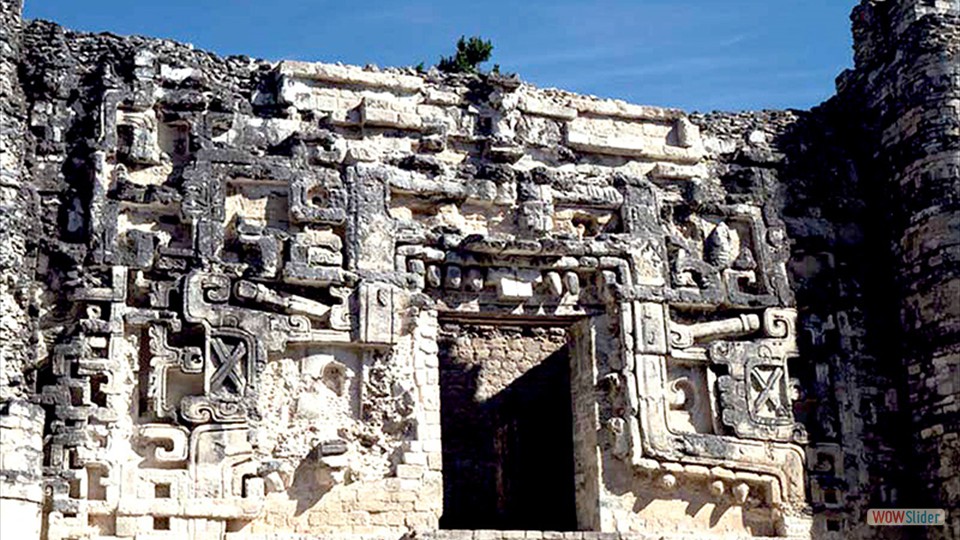
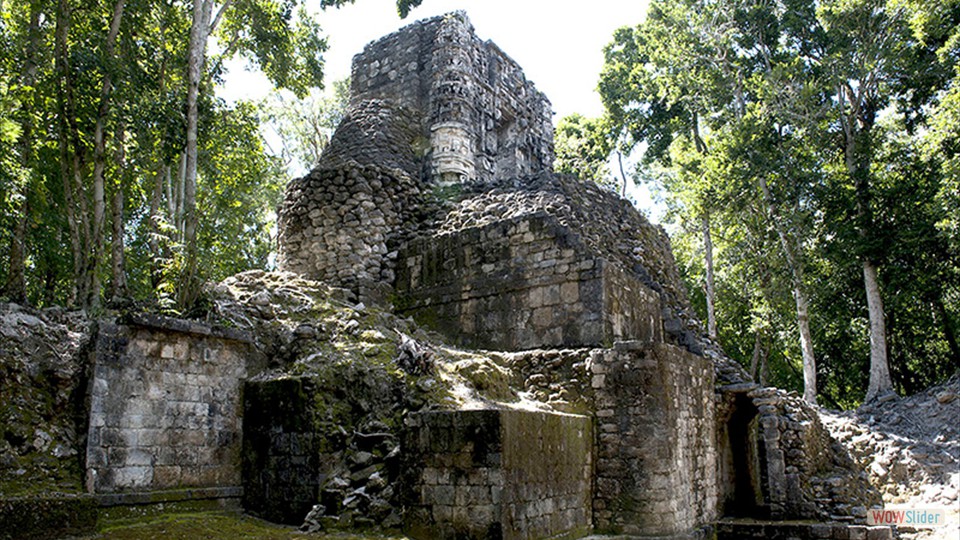
 1
1 2
2 3
3 4
4 5
5 6
6